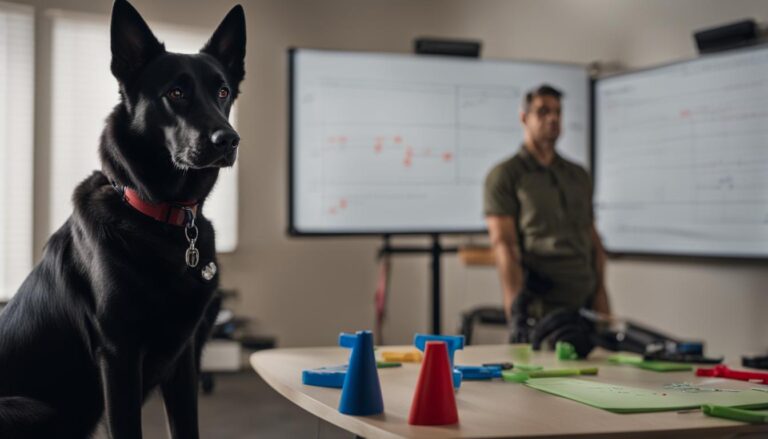Tiny dog care is a unique aspect of dog ownership that requires special attention to ensure the well-being of your little canine companion. This article will delve into the essential tips and considerations for small breed dog owners, from understanding their characteristics to meeting their specific care needs.
Tiny Dog Care – Key Takeaways
| Category | Key Takeaways |
|---|---|
| General Characteristics | Small dog breeds often have unique personality traits and live longer than larger breeds. |
| Breed Selection | Choose a small dog breed that matches your lifestyle, considering energy levels and grooming needs. |
| Nutritional Needs | Feed high-quality food designed for small breeds, manage portion sizes to prevent obesity. |
| Training and Socialization | Start training early using positive reinforcement; socialize with various environments and beings. |
| Behavioral Challenges | Address problems like excessive barking or separation anxiety early with consistent training. |
| Cavalier King Charles Spaniel Care | Regular grooming needed; balance between cuddles and playtime. |
| Enrichment Activities | Provide physical and mental stimulation through dog sports and puzzle toys. |
| Grooming Requirements | Regular brushing, nail trimming, and possibly professional grooming for ear and dental care. |
| Exercise Needs | Provide regular exercise tailored to the dog’s size; avoid overexertion; watch for fatigue signs. |
| Interactions with Larger Breeds | Use careful introduction techniques; use a harness for walks; know when to intervene. |
| Healthcare | Keep up with regular vet visits, vaccinations, and monitor for breed-specific health issues. |
| Responsible Ownership | Train and socialize your dog; create a secure living environment; use ramps to prevent injuries. |
| Leash Training | Essential for safety and control during walks; choose comfortable and secure leash/harness. |
| Indoor and Outdoor Safety | Remove hazards like choking risks and toxic plants; use fenced areas or supervise outdoors. |
| Misconceptions | Small dogs are resilient and can be well-trained, contrary to common beliefs. |
Understanding Small Dog Breeds
Photo by Alvan Nee on Unsplash
Characteristics of Small Dog Breeds
Small dog breeds, including toy dogs and many small dogs often possess distinct personality traits and physical attributes. They tend to live longer than their larger counterparts and may require different care to remain happy and healthy.
Choosing the Right Small Dog Breed for You
Selecting a breed that fits your lifestyle is crucial. Consider factors such as energy levels, temperament, and grooming needs. Breeds like Chihuahuas, Poodles, and Yorkshire Terriers are popular choices among small breed enthusiasts.
Special Care Needs of Small Breed Dogs
Nutritional Requirements for Small Dogs
- Feed your small dog high-quality dog food specifically for small breeds.
- Offer several small meals a day to support their fast metabolisms.
- Be mindful of their tiny bodies and avoid overfeeding to prevent obesity.
Training Tips for Small Breed Puppies
- Make training a priority from a young age to establish good behavior.
- Utilize positive reinforcement instead of punishing to encourage learning.
- Puppy classes can be particularly beneficial for socialization and reinforcing good behavior.
Socialization and Training for Small Breeds
Importance of Socializing Small Breed Dogs
Socialization is key to ensuring that your dog is well-adjusted and confident. Introduce your pup to various environments, people, and other dogs in a controlled manner.
Effective Training Techniques for Small Dogs
- Keep sessions short and engaging to maintain your small dog’s interest.
- Use treats and toys designed for small breeds to reward progress.
- Be consistent with commands and expectations across all family members.
Behavioral Challenges in Small Breed Puppies
Addressing issues like excessive barking or separation anxiety early on is essential. Consistent training and mental stimulation can help manage these behaviors.
Care and Training for Cavalier King Charles Spaniel
The Cavalier King Charles Spaniel is a beloved small breed known for its affectionate nature. They require regular grooming and enjoy both cuddles and playtime, making them excellent lap dogs and companions.
Enrichment Activities for Small Breeds
- Engage your tiny dog in dog sports that are great for physical and mental exercise.
- Offer toys and puzzles designed for small breeds to keep their minds active.
- Ramps can help prevent injuries by providing easier access to furniture.
Remember, every small breed dog has its own set of needs. Responsible dog ownership entails understanding and catering to these needs to ensure a fulfilling life for your small breed companion.
Small Dog Care and Maintenance
Photo by Alexander Grey on Unsplash
Caring for a small dog comes with its own set of challenges and rewards. Unlike their larger counterparts, these pint-sized pups require specific attention to their dietary, grooming, exercise, and health care needs. Whether you’re a seasoned pet owner or new to the world of little canines, understanding the nuances of small dog maintenance is essential. From the nuances of feeding schedules to the importance of regular vet visits, this guide will help you determine the best practices for ensuring your miniature companion lives a happy, healthy life.
Diet and Feeding Strategies for Small Dogs
Optimal nutrition is crucial for the well-being of little dogs. These dogs need a balanced diet that is high in energy and rich in nutrients appropriate for their size. It’s also a good idea to feed adult dogs multiple small meals to prevent hypoglycemia and maintain their energy levels throughout the day. When feeding your dog, make sure to take into account their specific needs based on their activity level and health status.
For small pups, specially formulated kibble that is easier to chew and digest is often recommended. People make the mistake of overfeeding their pets, which can lead to obesity and related health issues. Therefore, closely monitoring portion sizes according to the breed’s requirement is essential. Dog breeds like Chihuahuas and Yorkies may seem like they can get by with less food, but their high metabolism means they actually need calorie-dense nutrition.
Optimal Nutrition for Tiny Canines
- Small dogs require specific calorie intake tailored to their size.
- Toy breeds may need more energy-dense foods.
Feeding Schedules and Portions
- Small dogs may benefit from multiple small meals throughout the day.
- Pounds or less: Always check the recommended food amount for your dog’s weight range.
Food Types and Treats
- Wet food versus dry food: pros and cons.
- Healthy treat options that won’t lead to obesity.
Grooming Tips for Small Breed Dogs
Grooming is another aspect of care small breed dogs require. Regular brushing is necessary to prevent matting and tangling, especially in breeds with longer hair. Nail trimming is also crucial as long nails can result in injuries or discomfort. For some breeds, professional grooming might be necessary to maintain their coat’s health and hygiene, particularly when it comes to ear and dental care.
Routine Care
- Regular brushing to prevent matting, especially in breeds like Pomeranians.
- Nail trimming to prevent overgrowth and discomfort.
Professional Grooming
- When to seek the help of a professional groomer.
- The importance of ear and dental hygiene.
Exercise Requirements for Small Breeds
Photo by Joe Caione on Unsplash
Despite their diminutive size, small dogs need regular exercise to keep them fit and prevent behavioral issues. Suitable activities for little dogs include short walks and interactive play sessions. Engaging in dog sports specifically designed for small breeds can provide both physical and mental stimulation. However, it’s important to avoid overexertion and be sure to take note of your dog’s fatigue signs.
Physical Activity Needs
- Despite their size, smaller dogs still need regular exercise.
- Suitable activities include short walks, interactive play, and certain dog sports are great for mental and physical stimulation.
Avoiding Overexertion
- Recognizing the signs of fatigue in your dog.
- Adjusting exercise length and intensity to your dog’s level.
Precautions for Small Dogs around Larger Breeds
When introducing your small dog to larger dogs, it’s important to use appropriate introduction techniques and understand both dogs’ body language to prevent conflicts. Dog owners should use a harness instead of a collar when walking their little dog for better control and should know when to remove their dog from a potentially dangerous situation.
Introducing Your Dog to Larger Dogs
- Appropriate dog to dog introduction techniques.
- Understanding body language to prevent conflicts.
Safety Measures
- Using a harness instead of a collar for better control.
- Knowing when to remove your dog from a potentially dangerous situation.
Healthcare for Small Dog Breeds
Routine veterinary visits are paramount for maintaining the health of your little dog. Vaccination schedules and preventative care are key elements of healthcare that can help your dog avoid common health issues. It’s also vital to monitor for signs of illness as your dog gets older since some breeds need special attention due to breed-specific ailments.
Routine Veterinarian Visits
- Importance of regular check-ups with a veterinarian.
- Vaccination schedules and preventative care.
Common Health Issues
- Identifying breed-specific ailments.
- Monitoring for signs of illness as your dog ages.
Responsible Ownership of Small Breed Dogs
Responsible dog ownership means understanding everything you need to know about caring for a small breed. This includes training and socialization with both humans and other dogs of all sizes. It also involves creating a secure living space at home, with measures like using ramps to prevent injuries from jumping or falling.
Training and Socialization
- Why training is very important for small dogs.
- Socializing with both humans and other dogs of all sizes.
Creating a Secure Living Space
- Home safety measures like ramps to help prevent injuries.
- Avoiding hazards that can cause access challenges.
Understanding the Unique Needs of Small Breed Dogs
Photo by Matthew Henry on Unsplash
Leash training from an early age is essential, as it provides safety and control during walks. It’s important to choose the right leash and harness for comfort and security. Leash etiquette becomes especially significant when taking your dog out in crowded areas or around big dogs.
Behavioral Tendencies
- Recognizing separation anxiety and how to mitigate it.
- Managing excessive barking with training and enrichment.
Special Accommodations
- Adapting your home environment: beds, stairs, and furniture.
- Travel considerations for small dogs.
The Importance of Leash Training for Small Dogs
Indoor safety measures should include removing potential choking hazards and ensuring toxic plants are out of reach. Outdoor precautions should involve fenced areas or close supervision to prevent escape or injury from larger animals or environmental dangers.
Leash Skills
- The benefits of early leash training.
- Choosing the right leash and harness for comfort and safety.
Leash Etiquette
- How to behave on walks, particularly around larger dog or in crowded areas.
Creating a Safe Environment for Small Breeds
Indoor Safety
- Removing choking hazards and toxic plants.
- Ensuring your dog has a safe space of its own.
Outdoor Precautions
- Fenced areas and close supervision to prevent escape or injury.
- Weather-related safety: protecting against heat and cold.
Common Misconceptions about Small Breed Ownership
Fragility vs. Resilience
- Debunking the myth that small breed dogs are less sturdy than big ones.
- Promoting proper handling to avoid injuries.
Training and Intelligence
- Countering the belief that small dogs can’t be trained as well as larger ones.
- Highlighting success stories of small dogs in obedience and as part of service dog teams.
By embracing these helpful tips and taking to heart the responsibilities that come with owning a tiny canine, you’ll provide a loving and nurturing environment for your small companion. Always be sure to consult your veterinarian or a pet care professional for personalized advice specific to your dog’s breed and individual needs.
*Featured Image Photo by Angelina Litvin on Unsplash














